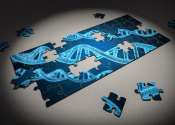Study finds 'dark matter' DNA is vital for rice reproduction
Researchers from the Okinawa Institute of Science and Technology Graduate University (OIST) have shed light on the reproductive role of 'dark matter' DNA—non-coding DNA sequences that previously seemed to have no function.







